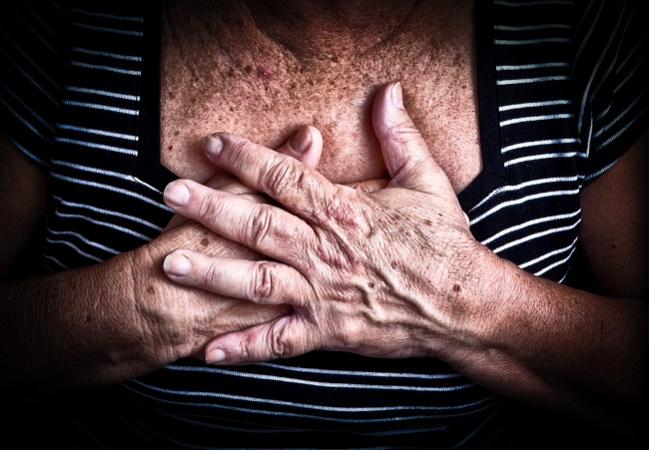Even With Early Invasive Strategy in NSTE ACS, Women Face Poorer Outcomes Than Men
This doesn’t mean revascularization should be withheld from female patients, researchers say, but rather that there are other reasons for sex disparities.

Sex differences still exist for patients with non-ST-elevation acute coronary syndromes even among those who promptly undergo revascularization, a Canadian observational study suggests. Researchers found an increased risk of recurrent ACS—but not death—in women versus men through 2 years. There was no disparity among those who instead had only medical management.
But asked by TCTMD whether these findings discourage use of an early invasive treatment in women, lead author Jacob A. Udell, MD (University of Toronto, Canada), said: “Absolutely not.”
“In fact, I would argue the opposite,” he continued. “Given we found that women were treated with coronary revascularization only about half of the time and considerably less frequently than men, we have room for improvement in equalizing access to this lifesaving care when presenting with a heart attack. There are plenty of data from randomized trials that have shown that an early invasive strategy reduced adverse cardiovascular events to a similar extent in women compared with men when presenting with high risk acute coronary syndromes.”
Via email, Udell suggested two explanations for the findings he and colleagues published earlier this week in the Journal of the American Heart Association. There may be a subtle selection bias that deters clinicians from pursuing an early invasive strategy in women, he said, or it’s possible that women’s coronary disease may be less responsive to that treatment.
“Under that assumption, women who were studied likely were a bit higher risk and sicker at presentation to merit proceeding with angiography, and as a result they remained at consistently higher risk for major adverse cardiac events compared with similarly treated men, despite our best effort to statistically balance baseline characteristics between sexes,” he explained. “Alternatively, we know that women with ACS are more likely to have nonobstructive epicardial CAD, smaller epicardial coronary arteries, less traditional focal plaque rupture, more microvascular disease, and less complete revascularization when appropriate, all of which would predispose to a higher burden of symptoms which could manifest as subsequent sex-differences in recurrent ACS as opposed to mortality.”
Revascularization Alone Not a Panacea
The population-based study looked at 23,473 NSTE ACS patients who received cardiac catheterization during an index hospital stay in Ontario, Canada, between 2008 and 2011. Among them, 66.1% of men and 51.8% of women were revascularized, with women in this group more likely to receive PCI compared with men (86.0% vs 81.5%; P < 0.001).
Inverse-probability weighting using a propensity score was employed to account for baseline differences between the sexes. At 1 year, the combined rate of death or recurrent ACS in the revascularization group was 10.6% for men and 13.1% for women (HR 1.24; 95% CI 1.16-1.33). This difference persisted at 2 years. But rates did not differ by sex among patients who did not receive coronary revascularization (17.8% vs 16.9%; HR 1.06; 95% CI 0.99-1.14).
When death and recurrent ACS were examined separately, only the risk of the latter outcome was significantly elevated for revascularized women versus men at 1 and 2 years.
Among the patients who underwent revascularization, women were more likely experience bleeding or receive a blood transfusion than men (12.8% vs 7.3%). Compared with male patients, female patients were more likely after discharge to use ACE inhibitors/angiotensin receptor blockers (66.9% vs 62.4%), adenosine diphosphate receptor antagonists (82.2% vs 74.5%), and statins (85.7% vs 83.8%; all P < 0.001). Within 30 days, 86.3% of women and 84.6% of men visited a primary care physician, while 39.1% and 40.6%, respectively, saw a cardiologist. There was no difference in their likelihood of having an echocardiogram performed in their first month postdischarge.
The persistence of disparities even after revascularization, Udell said, “suggests that increasing rates of revascularization alone may not be the panacea to eliminating sex-based differences in adverse outcomes following MI/ACS. So there's more work to be done to tease out exactly what is driving the residual increase in risk so we can develop strategies to better treat women presenting with ACS undergoing coronary revascularization.”
One clue may lie in the observation that women had higher rates of bleeding and blood transfusion, he noted. “Prior research has shown we can do better at dose selection of anticoagulants in women independent of clinical risk factors. Other bleeding avoidance strategies are being tested, and radial access has shown ability to substantially reduce bleeding complications. But further research into determining sex-based bleeding avoidance strategies is certainly needed.”
Caitlin E. Cox is News Editor of TCTMD and Associate Director, Editorial Content at the Cardiovascular Research Foundation. She produces the…
Read Full BioSources
Udell JA, Koh M, Qiu F, et al. Outcomes of women and men with acute coronary syndrome treated with and without percutaneous coronary revascularization. J Am Heart Assoc. 2017;6:e004319.
Disclosures
- Funding for this study was supported by a grant from the Heart and Stroke Foundation of Canada and by a Heart and Stroke Foundation of Ontario/University of Toronto Polo Chair in Cardiology Young Investigator Award.
- Outside of the current study, Udell reports consulting for Amgen, Janssen, Merck, Novartis, Sanofi Pasteur as well as receiving honoraria from Janssen (symposia) and Novartis (steering committee) plus grant support Novartis (site investigator).


Comments